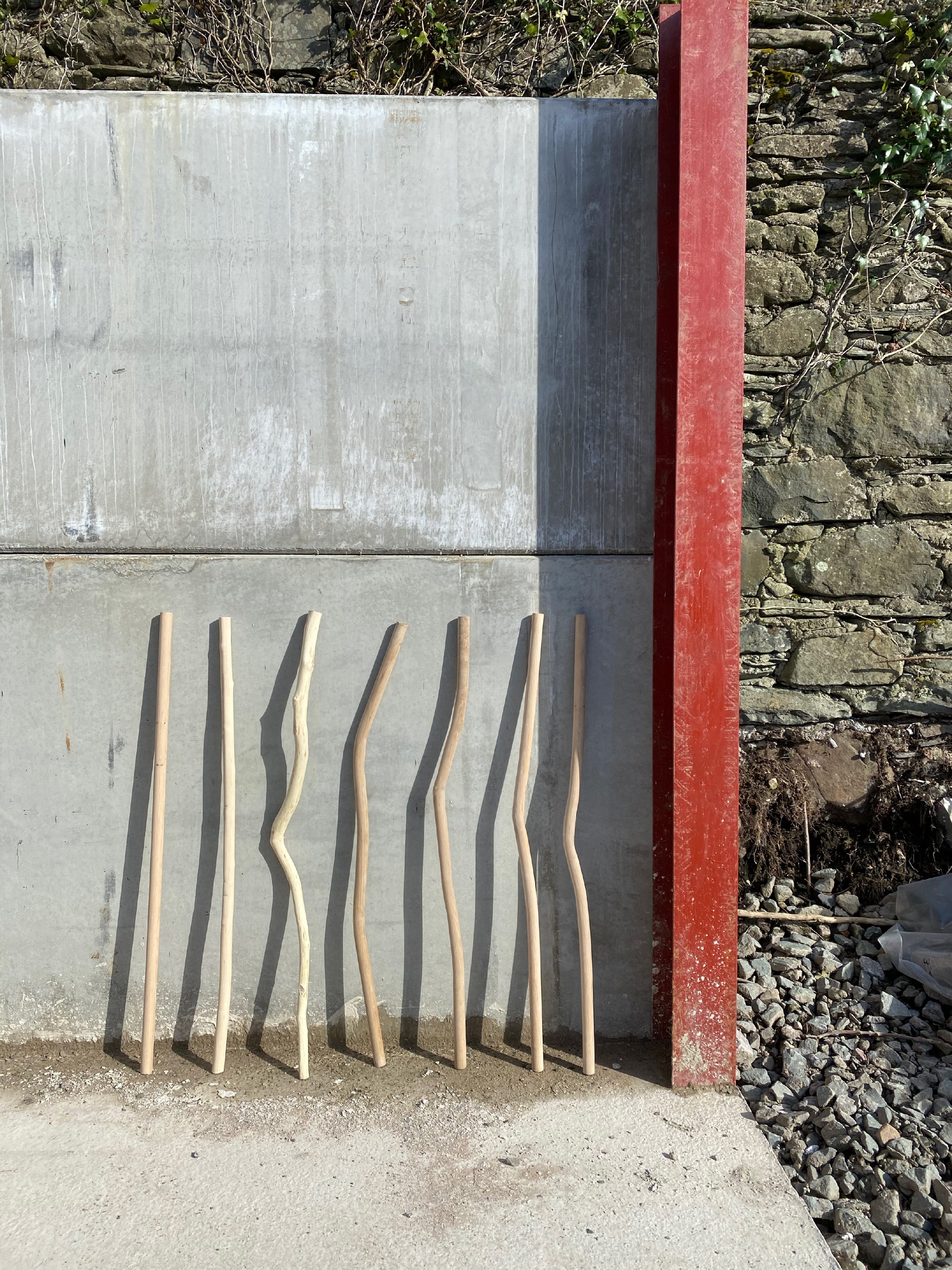The Eryri Collection
The Eryri Collection investigates what defines Welsh identity and how it might be celebrated within everyday domestic furniture. The work is a personal celebration; of the designer's profound attachment to her homeland, the rugged landscape of Snowdonia (Eryri), and mediation on whether cultural sustainability, encompassing many differing strands of history and culture, can be sustained through the medium of furniture design.
How we got here
Traditional furniture was ardently studied to understand relationships to physicality and the emblematic presence within the home, with the Welsh Stick Chair (Y Gadair Gefn Ffyn Gymreig) being a key precedent. Translating culture is a multifaceted practice; for instance, in the Welsh language, culture (diwylliant) has an innate connotation of its own, having a closer connection with the idea of folk, crafts, and communities in rural areas than the English equivalent, which is illustrated through the collection.
The Eryri collection is the result of the designer's search of infusing contemporary elements within traditional furniture, both through design and the making process. The cross section of the pieces have been manipulated to create new shapes, evoking Snowdonia’s mountainous landscape profiles. For those who know the landscape, forms are immediately distinguishable, such as the unique profile of Lliwedd and Snowdown used for the cross section of the bench and dining table. For those unfamiliar with Snowdonia, the manipulated components still evoke distinctive contemporary furniture.
Made in Wales
Entwining local craftsmanship from rural North Wales with 21st-century design approaches was key to the project, thus to celebrate community, rural regeneration and more importantly local talent, Swyn reached out to Rhodri Owen to produce the sample pieces for collection.
Stôl Tryfan / Tryfan Stool
Tryfan is one of Swyn’s favourite mountain’s in Snowdownia (Eryri), it’s profile completely changes depending on your viewpoint. While designing the Tryfan stool, (Stôl Tryfan) Swyn wanted to encompass this in the cross rails, mirroring a perspective on the side bars and encompassing the dramatic peak in the mid brace.
Based on a traditional milking stool, the height is lower than an average chair to allow a versatility of function to the piece, allowing it as a stand-alone stool, a side table or a spare chair for family gatherings.
From Central Saint Martin’s
Granary Square to “Y Granar” Llanrwst.
Swyn’s current Eryri Collection may look a bit different to her graduate showcase, she now works from her family’s makeshift studio on the doorstep to Snowdownia in which they’ve named ‘Y Granar’ as a subtle nod to their time at Central Saint Martin’s. Since graduating Swyn has developed selected pieces from her collection to be further fit for market and is consistently creating batches of sample pieces from the collection to ensure the best design. The initial pieces created for her graduate showcase has a heavier form, (The Eryri Bench) and includes an original one-off piece (Cadair Malo).
The Malo chair (Cadair Malo) was the conceptual think piece of the collection, named after Anwyl’s beloved niece as a celebration of the history and identity of Wales while focusing on its bright and hopeful future. The chair’s sticks have been subtly influenced by the ten highest peaks of Snowdonia, taking the original form of the Welsh Stick Back Chair and completely experimenting with its original visual language.
“It takes a village”
The project ardently studies the Welsh stick back chair as an archetype of traditional furniture in which Swyn was inspired by, traditionally a Welsh stick chair would have been made by numerous members of the community, romantically this has been mimicked within the production of pieces. Rhordi Owen, was the maker, with Anwyl producing the steam bent components of the chair, R M Joinery a local company turned the legs and CNC'd the cross section of the bench, Wyn Griffith from Ffiws, Porthmadog created the CNC’d components of the Malo chair and the final photos were taken by local photographer Peter Kneen.
Steam bending
Swyn carried out numerous methods to try and mimic the mountainous landscape of Snowdonia within her collection, from seeking natural curves from branches, carvings and finally steam bending. The process began with numerous smaller test samples using microwaves, damp cloths, boiling water and sieves, until she decided to carry out her larger test samples with her home built steam bender made from plastic pipes, wallpaper remover steamer and jigs created from scrap wood.
The current pieces are being produced using the method of CNC, which contributes to the harmony of traditional crafts and modern machinery within the collection… and a lot fewer risks and power cuts to the family home!








